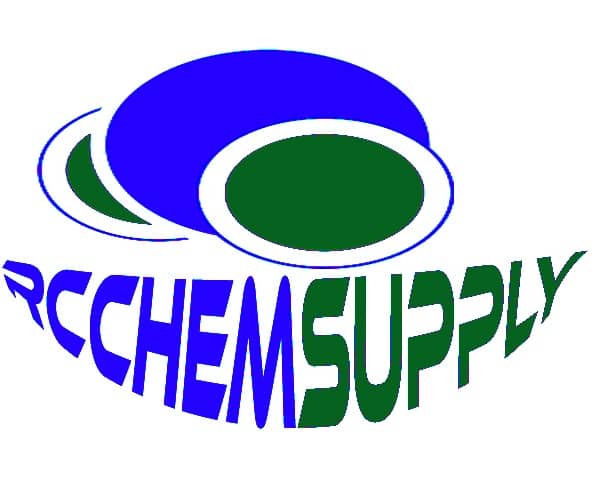New Psychoactive Substances: Inside the Fast-Moving World of Research Chemicals
Imagine a laboratory-lit skyline where curiosity fuels discovery. This is the reality behind New Psychoactive Substances (NPS) novel compounds that push the edges of pharmacology, commerce, and regulation across the United Kingdom, United States, Germany, Australia, and Asia.
New Psychoactive Substances, often called designer drugs, have grown into a multi-billion-dollar ecosystem. According to a recent report by the European Monitoring Centre for Drugs and Drug Addiction, over 830 unique NPS have been identified globally. From synthetic cannabinoids to potent benzodiazepines, these compounds present both opportunities for research and complex public health challenges.
Today, we’ll look closely at the landscape, reveal which substances are reshaping the market, and show you how to access credible suppliers.
What Are New Psychoactive Substances?
New Psychoactive Substances are laboratory-synthesised compounds designed to mimic or modify the effects of traditional drugs like cannabis, opioids, stimulants, and hallucinogens. Unlike conventional drugs, NPS often slip through regulatory loopholes by tweaking chemical structures.

For example, Flualprazolam and Flubromazolam are modern benzodiazepines that emerged as alternatives to classic sedatives.
The European Monitoring Centre for Drugs and Drug Addiction classifies them into three broad categories:
-
Synthetic cannabinoids (e.g., Spice, K2)
-
Stimulants (e.g., mephedrone, bath salts)
-
Synthetic opioids (e.g., fentanyl analogues)
Unlike traditional drugs, NPS rarely undergo safety testing. A World Health Organisation report warns that 80% lack toxicological data, making dosage and side effects a dangerous guessing game.
These substances have rapidly gained popularity among researchers and consumers alike.
Bold Key Points for Readability:
-
Novel formulations are engineered to skirt legal definitions.
-
Many are more potent than their traditional counterparts.
-
Supply chains span Asia, Europe, and North America.
“We’re witnessing an unprecedented expansion of synthetic compounds, each tailored to outmanoeuvre existing laws,” stated a recent study published by the United Nations Office on Drugs and Crime.
Most Popular New Psychoactive Substances
Explore this curated table summarising high-demand NPS, their uses, and direct purchase sources.
| Substance Name | Primary Use | Trusted Supplier |
|---|---|---|
| Flunitrazepam | Sedative, hypnotic | Rcchemsupply |
| Eutylone | Stimulant research | Rcchemsupply Eutylone |
| JWH-018 | Synthetic cannabinoid studies | JWH-018 Source |
| Mephedrone | Entactogen research | Mephedrone Online |
| Isotonitazene | Opioid receptor studies | Isotonitazene |
Why Are NPS So Attractive to Researchers?
New Psychoactive Substances deliver a fresh toolkit for laboratories. Scientists explore them to better understand receptor affinity, toxicity, and pharmacokinetics.
Some compounds, such as 1P-LSD, are prized for their psychedelic properties, while others, like 2-FDCK, are valued as dissociative anaesthetic analogues.
Key Advantages:
-
Novel molecular structures open doors to previously unknown effects.
-
High potency enables micro-dosing studies.
-
Rapid synthesis fuels continual innovation.
According to Rcchemsupply, one of the most respected research chemical suppliers globally, demand has surged as scientists look for next-generation therapeutics and reference standards.

Potential Risks and Ethical Considerations
It’s important to acknowledge that NPS carry serious risks. Because many compounds are new to science, their long-term effects remain largely unknown. For example, Eutylone and Methylone have been associated with neurotoxicity in high doses.
Tips to Minimise Risk:
-
Purchase only from verified suppliers like the Rcchemsupply Official Website.
-
Use accredited laboratories for analytical verification.
-
Follow all local regulations and guidelines.
Emerging Trends in the NPS Market
Picture an ever-evolving marketplace. Trends are shaped by shifting consumer demand and law enforcement crackdowns.
Notable Developments:
-
Synthetic Cannabinoids: Variants like 5F-UR144 and JWH-250 are in high demand.
-
Designer Benzodiazepines: Substances such as Bretazenil have filled gaps left by regulated medications.
-
Novel Opioids: Compounds like Etonitazene are gaining traction among research teams studying pain management.
“Innovation doesn’t sleep,” remarked a recent analysis by the Global Drug Survey.
The Double-Edged Sword of Accessibility
Online marketplaces have democratized access to NPS. Vendors like RC Chemical Supply offer compounds like Flualprazolam or Isotonitazene, often labelled “not for human consumption.” This legal grey area fuels a booming industry, particularly in the U.S., U.K., Germany, and Australia, where dark web sales surged by 60% between 2020–2023.
Yet accessibility comes at a cost:
-
Hospitalisations from synthetic cannabinoids increased by 45% in the EU last year.
-
Overdose deaths involving synthetic opioids (e.g., Carfentanil) now outpace heroin in North America.
Comparing Common NPS Categories
Table: Effects, Risks, and Legal Status
| Category | Common Examples | Duration | Key Risks | Legal Status (U.S./EU) |
|---|---|---|---|---|
| Synthetic Cannabinoids | JWH-018, 5F-ADB | 1–4 hours | Psychosis, seizures, and kidney damage | Illegal (Schedule I) |
| Synthetic Stimulants | Mephedrone, α-PVP | 2–6 hours | Heart failure, hyperthermia, paranoia | Varies by country |
| Synthetic Opioids | Fentanyl, U-47700 | 30–90 min | Respiratory depression, fatal overdose | Mostly illegal |
| Dissociatives | 3-MeO-PCP, 2-FDCK | 4–8 hours | Amnesia, dissociation, self-harm | Unregulated in many regions |
The Global Crackdown Dilemma
Governments struggle to keep pace. When Germany banned 15 synthetic cannabinoids in 2022, vendors simply released structural analogues like ADB-BUTINACA. The United Nations Office on Drugs and Crime admits that “for every NPS banned, ten new variants emerge.” This cat-and-mouse game highlights a critical gap: policy lags behind chemistry.
In Asia, where penalties are severe, underground labs thrive. A 2023 Interpol operation seized $500 million worth of NPS across 12 countries, revealing sophisticated trafficking networks.
Harm Reduction: A Pragmatic Approach
Given the risks, experts advocate evidence-based strategies:
-
Drug checking services: Programs like The Loop (U.K.) offer anonymous substance testing.
-
Dose titration: Start with micrograms when trying any new compound.
-
Naloxone access: Crucial for reversing synthetic opioid overdoses.
As researcher Dr. Adam Winstock notes, “Abstinence-only messaging fails. We must equip people with tools to reduce immediate dangers.”
Key Takeaways
-
New Psychoactive Substances are reshaping scientific exploration.
-
They offer unique pharmacological profiles.
-
Sourcing from reliable vendors such as Rcchemsupply is critical.
-
Ethical use and responsible handling are non-negotiable.
-
Stay informed through credible research publications.
Frequently Asked Questions About New Psychoactive Substances
What are the most popular NPS today?
Popular examples include Flualprazolam, JWH-018, and Eutylone.
Are NPS legal to purchase?
Laws vary by region. In many jurisdictions, some substances are controlled while others remain unregulated. Always check your country’s regulations.
Where can I buy NPS online?
Trusted sources include Rcchemsupply, a verified supplier with a broad catalogue.
Why do researchers prefer NPS?
They offer novel mechanisms of action, ideal for pharmacological studies and reference standards.
What precautions should I take when studying NPS?
Use lab-grade equipment, verify purity, and consult all local legal requirements.
Are NPS legal?
Legality varies wildly. While China bans all fentanyl analogues, Canada permits some research chemicals for scientific use. Always check local regulations via official sources like the DEA Controlled Substances Act.
Why are synthetic opioids so dangerous?
Compounds like Cychlorphine (4x stronger than fentanyl) cause rapid respiratory depression. Unlike heroin, they don’t trigger choking reflexes before overdose.
Can NPS be used safely?
There is no “safe” recreational use. However, volumetric dosing and reagent testing (e.g., Marquis kits) minimise risks compared to unverified powders.
How do I recognise synthetic cannabinoid poisoning?
Symptoms include violent agitation, tachycardia, and hallucinations. Seek ER care immediately—benzodiazepines are the first-line treatment.
Are there medical applications for NPS?
Some derivatives show promise: Ketamine analogues treat depression, while synthetic cathinones are studied for ADHD.
What’s driving NPS popularity?
Lower costs, avoidable legal consequences, and discreet online access. A gram of synthetic cannabinoids costs 80% less than natural cannabis.
How can parents identify NPS use?
Look for disguised packaging (e.g., “potpourri,” “jewellery cleaner”), rapid weight loss, or financial secrecy.
Call to Action
Curious to explore the possibilities of cutting-edge research?
Visit RCchemsupply’s official Website to browse the complete catalogue, request sample packs, and discover special pricing for laboratories.
Stay ahead, stay informed, and source responsibly.
For further reading and reference, consult reputable publications such as the European Monitoring Centre, United Nations Office on Drugs and Crime, and the Global Drug Survey.



